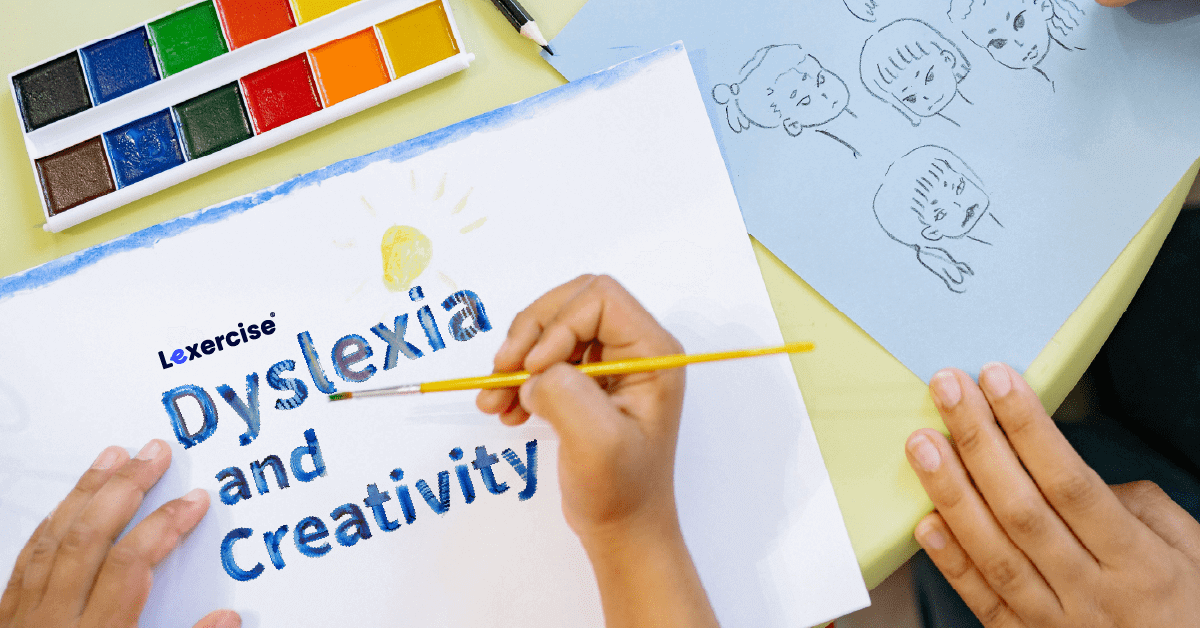Creativity and Dyslexia
Written by Sandie Barrie Blackley, Speech-Language Pathologist
Published on April 14, 2025

Dyslexia is often associated with struggles in reading, writing, and spelling. While the direct relationship between dyslexia and creativity or other unique abilities remains a topic of ongoing research, there is evidence that all students, including those with dyslexia, benefit from instruction that fosters creativity, critical thinking, and the use of imagery (Graham, et al., 2024).
Fostering Creativity
 The Yale Center for Dyslexia and Creativity highlights that the high creativity seen in dyslexics often stems from the dedication and time they invest in exploring new ways to learn and express themselves. Their determination to overcome challenges fosters resilience and innovative thinking. While that makes sense, parents and teachers of dyslexia students might wonder how they might foster such determination in a student.
The Yale Center for Dyslexia and Creativity highlights that the high creativity seen in dyslexics often stems from the dedication and time they invest in exploring new ways to learn and express themselves. Their determination to overcome challenges fosters resilience and innovative thinking. While that makes sense, parents and teachers of dyslexia students might wonder how they might foster such determination in a student.
Improving writing skills has been shown to improve reading, critical thinking, creativity, and academic confidence. Graham, et al. (2024) have provided a list of recommendations for improving students’ writing. Based on findings from close to 1000 research studies, these practices can be used for teaching creative writing to younger students (ages 5–11) and older students (ages 6–18).
Here’s the list:
-
Students need to write, but writing is not enough.
-
Student writing needs to be supported through explicit, structured procedures.
-
Foundational writing skills (letter formation, vocabulary, spelling, and sentence construction) need to be explicitly taught.
-
Students become better writers when strategies for planning, revising, and editing are taught and supported.
-
Focusing on creativity, critical thinking, and imagery can enhance writing.
-
Students need to be taught how to write summaries.
-
Students need technical knowledge about writing, such as the genres of writing, concepts such as coherence and cohesion, and storytelling techniques like character development and plot structure.
-
Students need to use twenty-first-century writing tools in the classroom.
-
Students need to write across the curriculum.
-
Reading and writing instruction needs to be connected.
-
A motivating writing environment fosters both quality and productivity.
Dyslexic Strengths: Creativity and Beyond
Dyslexia is not merely a challenge; it can be a doorway to remarkable strengths. Below are some of the key abilities reported by successful individuals with dyslexia:
- Visual-Spatial Reasoning: Multi-dimensional thinking can spark creativity and problem-solving. This skill is invaluable in fields like architecture, engineering, and design.
- Problem-Solving: Students need both fast and slow thinking to solve problems (Kahneman, 2013). Seeing the bigger picture is essential for tackling complex problems, but detailed thinking is required to accomplish the solutions.
- Narrative Memory: Many dyslexics remember facts and details as vivid stories, a strength that can enhance their creativity in writing, acting, or storytelling.
- Empathy and Communication: Personal struggles often make dyslexics highly empathetic and skilled at reading others. They frequently excel in interpersonal communication and emotional intelligence.
- Abstract Thinking: Dyslexics often comprehend intangible concepts, such as bravery or love, with extraordinary depth. This abstract thinking fuels their creativity in philosophy, art, and innovation.
Why Dyslexics Often Thrive in the Arts
Many individuals with dyslexia are drawn to artistic fields where their unique thinking patterns shine. The ability to visualize concepts, think outside the box, see the big picture, and approach challenges creatively makes them natural artists, designers, and innovators.
For example, the brain process that causes a dyslexic student to view the letters -b- and -d- as the same mirrored image enables them to excel in imagining objects, scenes, or designs in flexible ways.
Turning Challenges Into Strengths
As we’ve seen with countless famous dyslexics, success often comes from reframing perceived disadvantages as strengths. For example, dyslexic entrepreneurs frequently attribute their success to their ability to think differently and problem-solve creatively.
Programs like Voices of Dyslexia, an online journal featuring creative works by individuals with dyslexia, provide powerful platforms for dyslexics to showcase their talents in poetry, essays, music, and art. Such initiatives not only celebrate their creativity but also inspire others to embrace their unique gifts.
Supporting Creativity in Dyslexic Children
Building a positive growth mindset around dyslexia is crucial for helping children unlock their potential. Encourage your child to explore creative outlets that come naturally to them, whether in art, music, storytelling, or problem-solving. Recognizing their strengths will build confidence and pave the way for future success.
Early intervention is equally vital. Addressing reading, writing, and spelling challenges through research-backed therapies can reduce frustration and empower dyslexics to focus on their strengths. Schedule a free consultation with one of our dyslexia therapists to learn more about how we can support your child’s journey.
Celebrate the Creativity in Dyslexia
From famous artists to innovative entrepreneurs, dyslexics have proven that their unique perspective can be an invaluable asset. By recognizing and nurturing their strengths, we can help individuals with dyslexia turn their challenges into powerful tools for creativity and success.
Unlock your child’s creative potential and help them thrive with our research-backed dyslexia therapy. Schedule a consultation today to learn how we can support their journey to success.
Improve Your Child’s Reading
Learn more about Lexercise today.
Schedule a FREE
15-minute consultation


